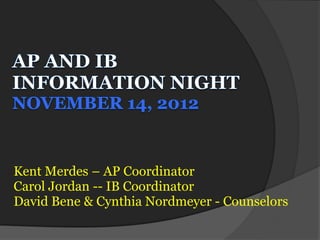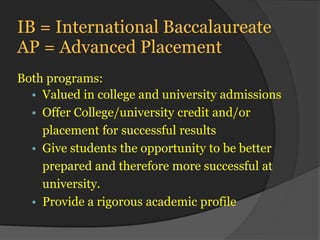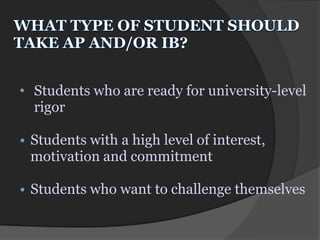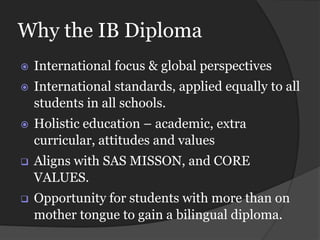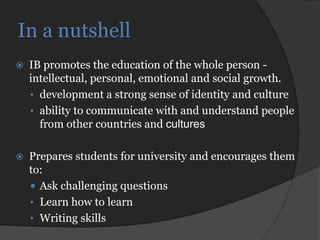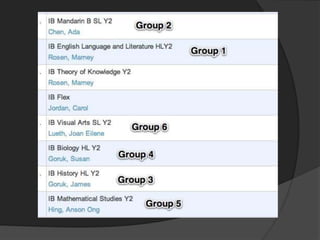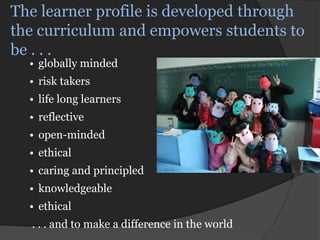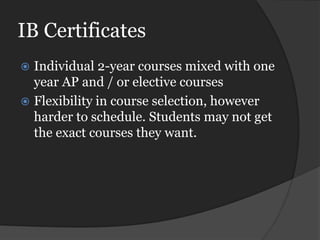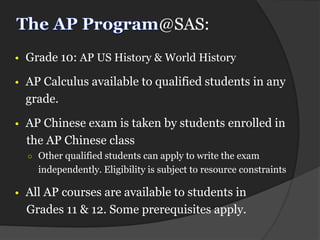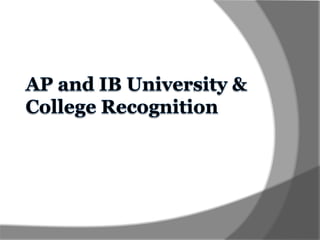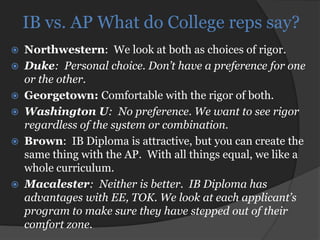This document provides information about the International Baccalaureate (IB) and Advanced Placement (AP) programs available at the school. It introduces the IB and AP coordinators and counselors who can provide guidance to students. While general information about the programs is provided, specific course selections will be addressed individually with students starting in February. Both IB and AP offer rigorous academic courses that can earn students college credit. The document discusses the benefits of each program and stresses that admissions officers view them equally. It provides details about the course offerings and requirements for the IB Diploma Program and certificates.
